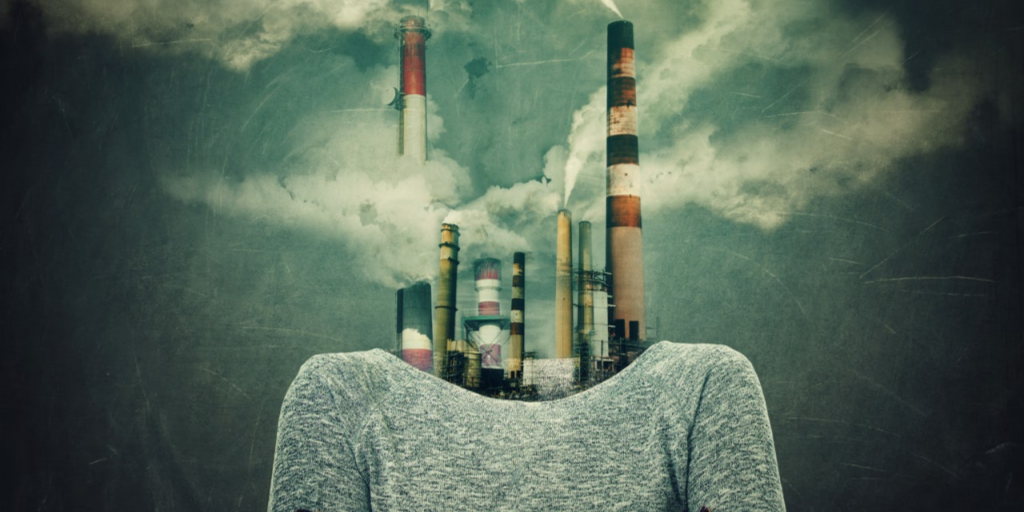The innovation apocalypse

You don’t need to be a CEO to feel the change. It’s everywhere, it’s in every article you read, the people you talk to and somehow even sci-fi movies feel lest futuristic and more present day. From the catchphrases of blockchain, Cryptocurrencies, AI, AR, and VR, we are all racing on a technological hamster wheel which is gaining velocity at a frightening pace.
So what keeps CEO’s up at night? It’s not the neighbour’s dog barking anymore, it’s the pace of technological change. In the latest Fortune Magazine CEO survey 73% said they were staring at the walls because of this concern. But parents too are struggling to find a foothold in a future changing so fast they can’t prepare their children for it.
I also speak with hundreds of leaders a year who are grappling with the pace of change and how to prepare and protect their business against the innovation apocalypse. Often you can’t see the Tsunami coming, it’s not your competitor, it’s, instead, the guys in the garage, who are faster, feistier, they don’t conform to industry standards or the recommendations of a risk committee, they are 100% fixated on the customer problem and how to deliver a great experience. “Your question needs to be how can I embrace disruption?”. “How can I
not only find the location of the garage, but have a few beers with the founders inside?”
Chances are if you throw them a six pack, they will be eager to explore how quickly you could help them grow because they are hungry. It’s not the first to market, it’s the first to scale. This is what Slingshot does.
How often does history repeat itself? How could Kodak not have understood the impact of digital cameras? Nokia or Palm the iPhone? History is dotted with examples of where leadership and vision are two different things. Yahoo had two chances to buy Google first in 1998 for $1m, then it realised its mistake and offered $3bn in 2002 which wasn’t accepted as they wanted $5bn. Today, Google and its parent company Alphabet boast a market capitalisation of more than $500 billion. Yahoo refused to be sold for Microsoft for $40bn, eight years later Verizon buys it for $4.83bn – 90% of its value was wiped away in under 10 years.

So what is the next innovation catastrophe? Retail will be a fascinating watch. It’s like watching a road crash in slow motion. When digital first competed with bricks and mortar, retail heads went into the sand, well now it looks like many are in cement. It seems as though history is repeating itself and this time we can even see it playing out across the world as the Tsunami that hit America arrives at our shores, surely now is the time when you can’t deny the facts.
Remember when Blockbuster CEO Jim Keyes said in 2008, “Neither RedBox nor Netflix are even on the radar screen in terms of competition,” “It’s more Wal-Mart and Apple.” Today Netflix enterprise value is USD $89bn and Blockbuster is no longer present in every strip mall.
We saw some of the largest bankruptcies occur in 2017, many of them retailers such as Payless, iconic Toys R’ Us, and Radio Shack. CB insights reported that since January 2017 more stores shut down than during the GFC in 2008. That’s 6700 compared to 6,163. Just recently Footlockers Chairman and CEO, Richard Johnson does a ‘Blockbuster quote’.
“We do not believe our vendors selling product directly on Amazon is an imminent threat. There is no indication that any of our vendors intend to sell premium athletic product, $100-plus sneakers that we offer, directly via that sort of distribution channel,” he said.
With Footlocker on earnings call, how can you fail to understand that Amazon will indeed eat your operating model and sneaker brands for breakfast.
The new cannibalising the old – Has the p-Leisure gone out of shopping?

New entrants killing off established businesses is nothing new, but on the theme of retail, our shopping centres have been our new communities, killing off the high street and aggregating people into its glossy arms. Mr Harry Gordon Selfridge himself said that ‘a store should be a social centre’. Yet today the US is now littered with dead malls. Once retail was a leisure experience but even Coco Cola realised its sales where dropping in India as vital discretionary spend went into data. It wasn’t a new coconut water that impacted it but the changing needs of its customers.
Online, on-demand, personalised, pain free and efficient.
Should we be surprised that in a world where the future of work is shaping our society that a company wanting to reinvent the way we worked, live and play, has taken over a US Retail icon? Only recently, Lord & Taylor have sold their flagship property to WeWork in a $850m deal which will see the retailer retract its floors space to one fifth of its former 1826 glory.
Is work the new retail? Whether we are emailing a colleague to book a meeting room or booking a time slot for our Coles Delivery, we are doing everything from our desks and there is limited fun in that.
Startups are getting it right where incumbents are either in denial, trying too hard or are too slow. Quite simply no corporate can work on every idea, so why bother? Embrace your Startup ecosystem. Whether its an AI mirror, downsizing from retail shop to showroom, last mile delivery, voice enabled purchasing, or store as distribution. Let’s think less about the last mile and more about taking a single step towards innovation that site outside just wanting to play, who knows you could be friends for life.






